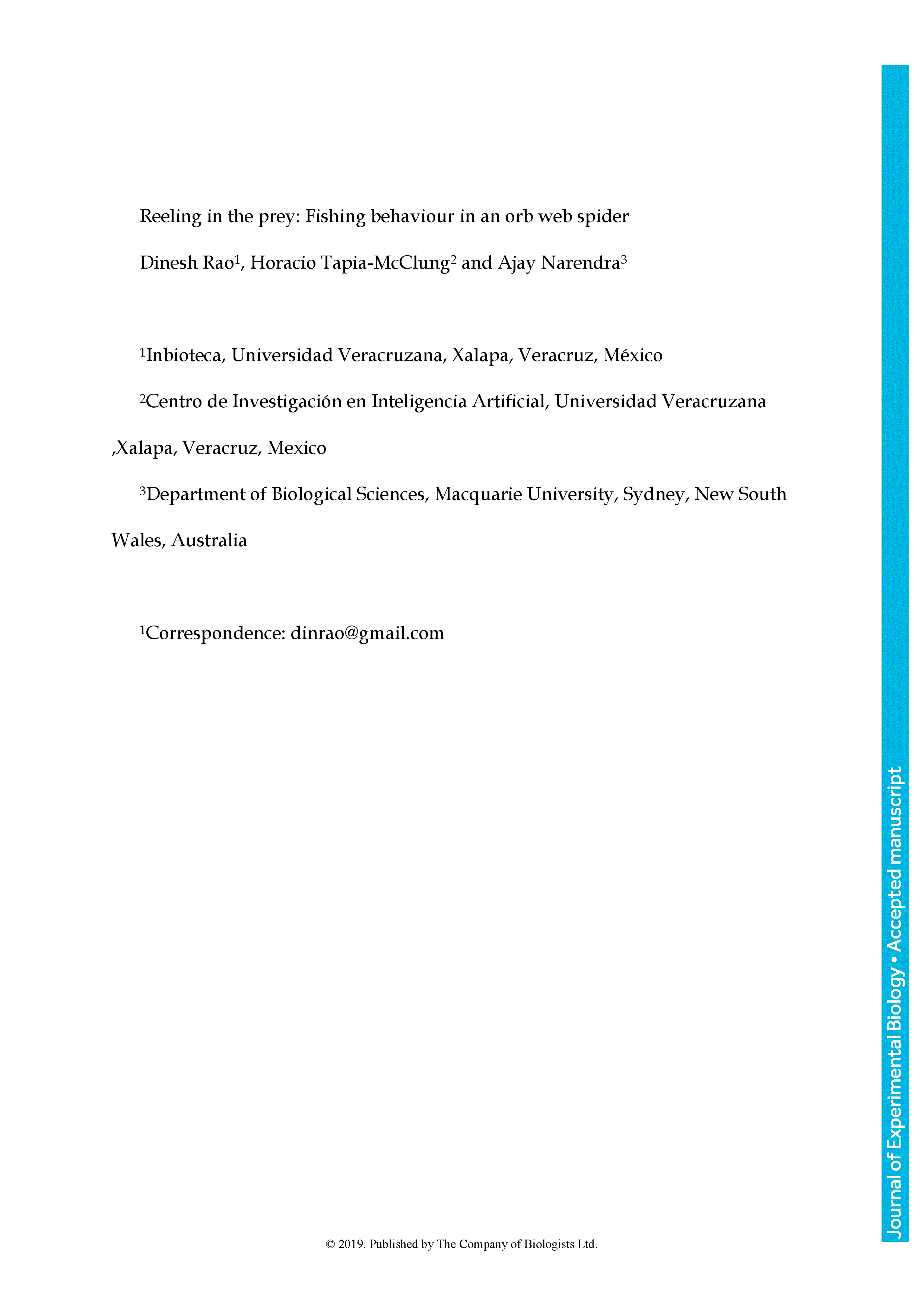When an insect is intercepted by a spider web, spiders quickly locate the prey, and run towards it. Once they make contact with the prey, they immobilise the prey and retrieve it to the centre of the web or the retreat for consumption. However, in rare circumstances, the spider can also pull the prey towards itself either while running to the prey or from a stationary position, a behaviour termed as ‘reeling’. Reeling is paradoxical since it can lead to web deformation or damage, thereby jeopardising future foraging success. Reeling may lead to increased retention time for heavier prey or for information acquisition with respect to the prey's identity, especially when these prey can cause damage to either the web or the spider itself. We explored the function of reeling behaviour in a neotropical orb web spider Verrucosa arenata. We show that spiders performed reeling behaviour irrespective whether they were approaching heavy or light prey, but they changed their trajectories of approach. Spiders approached heavier prey slower than light prey and they showed significantly higher frequencies of changes in velocities. We discuss these findings in the context of prey capture strategies and prey recognition.
Reeling in the prey: Fishing behaviour in an orb web spider
Currently Viewing Accepted Manuscript - Newer Version Available
Dinesh Rao, Horacio Tapia-McClung, Ajay Narendra; Reeling in the prey: Fishing behaviour in an orb web spider. J Exp Biol 2019; jeb.213751. doi: https://doi.org/10.1242/jeb.213751
Download citation file:
Advertisement
2023 JEB Outstanding Paper Prize shortlist and winner

The JEB Editors are delighted to announce the shortlisted authors for the 2023 JEB Outstanding Paper Prize. Read the winning paper - Tiny spies: mosquito antennae are sensitive sensors for eavesdropping on frog calls - by Hoover Pantoja-Sanchez and Brian Leavell from Ximena Bernal's lab at Purdue University, USA.
JEB Science Communication Workshop for ECRs

If you’re an early-career researcher interested in science communication and are attending the SEB Annual Conference in Prague this summer, come a day early and join the JEB Editors at a sci comm workshop to learn the key writing skills needed to promote your research to a broad audience beyond your peers (1 July at 14.30-17.30). Places are limited to 24 attendees, and applicants should apply through the SEB registration page by 30 April 2024.
Bridging the gap between controlled conditions and natural habitats in understanding behaviour

Novel technologies enable behavioural experiments with non-model species, in naturalistic habitats and with underexplored behaviours. In their Commentary, Scholz and colleagues discuss how to obtain a deeper understanding of the natural ecology and lifestyle of study animals.
Beluga metabolic measures could help save species

To help save animals from extinction, it’s important to understand what each species needs to survive. This led Jason John et al. to measure the metabolic rates of captive belugas to develop a ‘fish calculator’ showing that the whales need to eat ~23 salmon per day.
ECR Workshop on Positive Peer Review

Are you an ECR looking for tips on how to write concise, astute and useful manuscript reviews? If so, join the JEB Editors at a 2-hour JEB-sponsored Workshop on Positive Peer Review at the Canadian Society of Zoologists annual meeting in Moncton on 9 May 2024 at 13.00-15.00. There are 25 spaces for ECRs and selection is first come, first serve. To sign up, check the ECR Workshop box when you register for the CSZ meeting.



